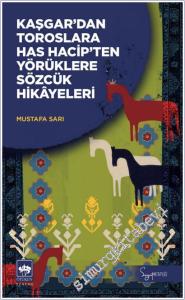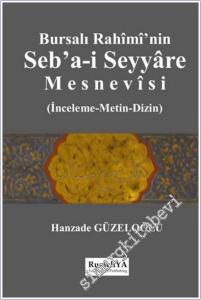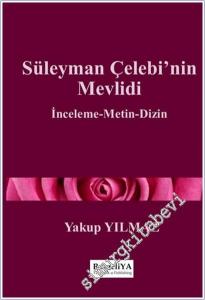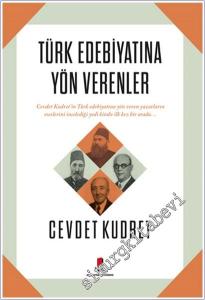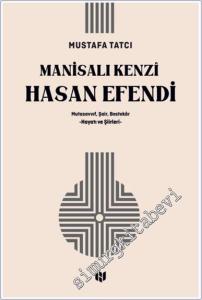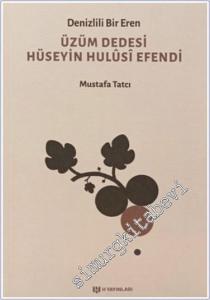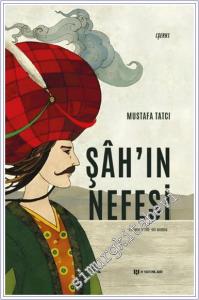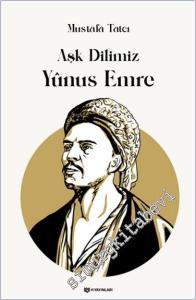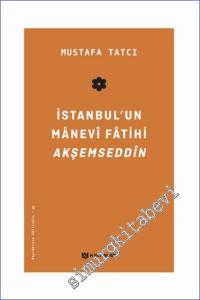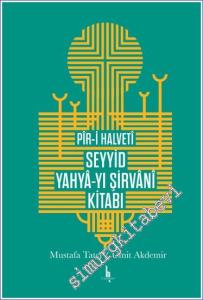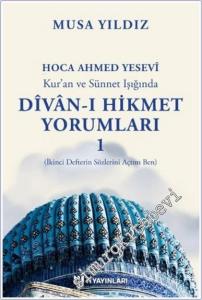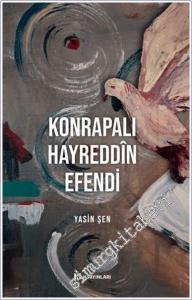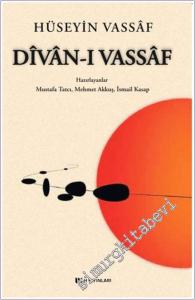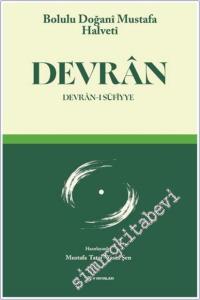#smrgKİTABEVİ Yunus Emre Külliyatı (Kutulu 5 Kitap 2 Cilt) - 2021
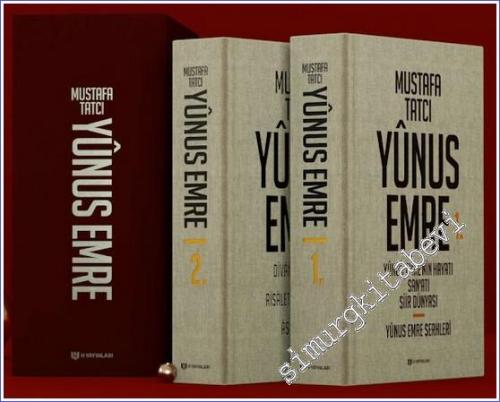
1. CİLT
Birinci cildin ilk kitabında Yûnus Emre'nin hayatı, şahsiyeti, dili, san‘atı incelenmiş ve şiirlerinde zikrettiği kavramların sistematik tahlilleri yapılmıştır. İlk kitabın ilk bölümünde Yûnus'un hayatı, tarihî ve menkabevî kaynaklardan derlenen bilgiler ışığında yeniden yazılmıştır. Bu bölümde Yûnus'u ortaya çıkaran kültür havzası da (Ahmed Yesevî, Tapduk Emre, Hacı Bektaş-ı Velî, Mevlânâ, Sarı Saltuk, Barak Baba) etraflıca incelenmiştir. İkinci kısımda, Yûnus'un eserleri, eserlerinin şekil ve muhtevâsı, dili ve san‘atı ele alınıp işlenmiştir. Eserin en orijinal bölümünü teşkil eden üçüncü kısımda ise şiirlerdeki “dinî ve tasavvufî” kavramlar tahlil edilmiştir. Bu kavramlar, beş yüzden fazladır. “Yûnus Emre Dîvânı” gibi kaynak bir eserin tahlili, edebiyat tarihine olduğu kadar kültür tarihi araştırmalarına da malzemeler verecektir.
Birinci cildin ikinci kitabında ise bugüne kadar tespît edilen klasik Yûnus şerhleri bir araya getirilmiştir. Şerh metinlerinin çoğunluğu Yûnus'un şathiyeleriyle ilgili olduğu için bu kitabın başına “şatahat” ve “remzî dil” hakkında uzunca bir inceleme konulmuştur. Bu kitaba dahil edilen metinler, Yûnus Emre'nin sembolik dilini çözmek için okuyucunun işini kolaylaştıracaktır. Kitapta; Şeyhzâde, Niyâzî-i Mısrî, Bursalı İsmail Hakkı, Selâmî Ali Efendi, Şeyh Ali Nevrekânî, İbrahim Hâs, Bekir Sıdkî Efendi, Şevket Turgut Çulpan gibi tasavvuf tarihinin önemli isimlerinin şerhleri bulunmaktadır.
2. CİLT
İkinci ciltte de üç ana kitap bulunmaktadır:
Bu cildin en önemli bölümünü oluşturan “Dîvân-ı İlâhiyât”, Yûnus'un şiirlerini bugüne kadar yapılan çalışmalar içinde şüphesiz en doğru şekilde ortaya koyan “edisyon kritik” çalışmadır. Dîvân metni ortaya çıkarılırken, yüzyıllardan bu yana elimize ulaşan 50'den fazla elyazması divan ve bir o kadar da cönk ve mecmua incelenmiş, şiirler beyit-beyit, mısra-mısra karşılaştırılarak bugünün harflerine aktarılmıştır.
İkinci cildin ikinci kitâbı Risâletü'n-Nushiyye'nin tenkitli metnidir. Bu manzûme Yûnus Emre'nin mesnevî tarzında kaleme aldığı, tasavvufî, öğretici ve eğitici bir eserdir. Yûnus bu eserinde, Anadolu Türklüğünün o devrin yaşantısından aldığı motiflere soyut manâlar vererek, sâde fakat derin, kısmen de alegorik bir üslûpla tasavvufî ahlâkı seyr ü sülûk denilen manevî yolculuğu, inşanın nefsi ile mücâdelesini, kendini bilme ve bulma gayretlerini, arayışlarını ve Allah'a kavuşma isteğini anlatmaktadır.
İkinci cildin üçüncü kitabı ise Âşık Yûnus ve diğer Yûnusların manzûmelerini ihtiva etmektedir. Yûnus'un etkilediği şâirler içinde Âşık Yûnus mahlasını kullanan ve 15. asırda yaşayan Bursalı bir Kübrevî dervîşi de vardır. Söz konusu Âşık Yûnus'tan başka “Yûnus” mahlasını kullanan şâirlerin de yetişmiş olabileceğini çeşitli yazmalardaki şiirlerden hareketle söyleyebiliriz. Mecmûa ve cönklerdeki “Yûnus” tapşırmalı şiirlerde, Bizim Yûnus ve Âşık Yûnus'un etkileri görülmekle birlikte bunlar daha zâhidâne bir üslûpla kaleme alındığı için diğerlerinden hemen fark edilmekte ve ayrılmaktadırlar. Üçüncü kitapta aktarılan şiirler bu Yûnus'ların şiirleridir.
Diğer taraftan minyatür sanatçılarının bu kitap için özel olarak yaptığı minyetürler, Yûnus Emre'nin daha iyi anlaşılması için hazırlanan bir sözlük ve Yûnus Emre'nin eserlerinde geçen kavramlardan inşa edilen kapsamlı bir dizin kitabı içerik ve estetik bakımından zenginleştiriyor…
*
YUNUS EMRE CORPUS – VOLUME I – II
This two-volume edition is the most comprehensive and accurate work on Yunus Emre, comprising five complemantary books. The two thousand-page book of Yunus Emre is the most expanded edition with new information and additional material as a result of thirty-five years of research by Mustafa Tatci. In addition to providing all aspects of Yunus Emre, this masterpiece uncovers the entire history of Turkish culture, literature, and sufism, formed by the influence of Yunus Emre and reached today like a flowing pure water for centuries. This work also reveals the roots of ‘Turkish Sufism Literature' which is one of the greatest literary traditions in the world.
VOLUME I
The first book of Volume I provides the reader with the systematic analysis of the concepts used in his poems, including the researches on Yunus Emre's life, personality, literary language and style. The rewritten biography of Yunus, compiled in the light of historical and epic sources, appears in the first chapter of the first book. In this chapter, the cultural domain (Ahmed Yesevî, Tapduk Emre, Hacı Bektaş-ı Velî, Mevlânâ, Sarı Saltuk, Barak Baba) from which Yunus emerged is revised in detail. Masterful poems of Yunus and the forms, contents and language of those works of art are discussed in the second chapter. The third chapter is the most compelling part of the thesis, where more than five hundred religious and Sufi concepts of Yunus poems are critiqued. By analyzing of such an extraordinary source “Collected Poems of Yunus Emre” will provide numerous materials for the researches of literary history as well as the cultural history.
The entire classical interpretations of Yunus poems of all times till now, are gathered in the second book of Volume I. Most of the paraphrastic texts refer to the ‘shatiyye' style poems of Yunus, hence a rather extensive review essay on ‘shatiyye' and ‘metaphorical language' at the beginning of the book. Inserted explanatory texts in the book facilitate the reader in deciphering the symbolic language of Yunus Emre. In the book, there are paraphases belonging to the impressive figures of Sufisim History such as Şeyhzâde, Niyâzî-i Mısrî, Bursalı İsmail Hakkı, Selâmî Ali Efendi, Şeyh Ali Nevrekânî, İbrahim Hâs, Bekir Sıdkî Efendi, Şevket Turgut Çulpan.
VOLUME II
Volume II contains three main books:
The most outstanding part of this volume is the “Collected Divine Poems / Divan-ı İlahiyat”; it is undoubtedly the most precise work of “critical edition” among all other studies carried outso far on Yunus poems. There is a comprehensive textual divine poetry that contains comparative analysis of more than fifty manuscripts with numerous corpuses and journals transcribed in Latin alphabet, including extended passages amounting to hundreds of lines of compelling verse.
The critical edition of “Risâletü'n-Nushiyye/The Book of Counsel” is the second book of Volume II. This enlightening and didactic poetry of Yunus Emre was penned in Sufistic masnavi form – the rhyming couplet. By assigning abstract meanings the patterns from the lives of the people of Anatolian Turkish at that time, Yunus intends to explain the sufistic moral values, the inner journey of the human to achieve the compelling struggle with the lower self (Nafs) consequently to perceive the secret inner self of the human for the ultimate union in a simple but meaningful, partially allegorical formulation. In the third book of Volume II, several poems by Aşık Yunus and other Yunus followers are offered, which are usually considered as the poems of Yunus Emre, also known as ‘Our Yunus'. Among the Sufi poets, influenced by Yunus Emre, there was a dervish with the epithet “Aşık Yunus”, who lived in Bursa in the 15th century. From the various manuscripts, it is evident that many other poets also used the epithet ‘Yunus'. Although the influences of ‘Our Yunus' and ‘Aşık Yunus' are realized in many of the poems with the epithet ‘Yunus' in the corpuses and journals, they can be easily distinguished from others by their fundementalistic wordings that are far from love and spirituality. Therefore, poems in the third book belong to these followers.
In addition, exclusive miniatures specially illustrated for this corpus by miniature artists, a glossary of Yunus phrases and Sufi words and a comprehensive index book of concepts used throughout the poetry estetically enrich the content of Yunus Emre Corpus.
1. CİLT
Birinci cildin ilk kitabında Yûnus Emre'nin hayatı, şahsiyeti, dili, san‘atı incelenmiş ve şiirlerinde zikrettiği kavramların sistematik tahlilleri yapılmıştır. İlk kitabın ilk bölümünde Yûnus'un hayatı, tarihî ve menkabevî kaynaklardan derlenen bilgiler ışığında yeniden yazılmıştır. Bu bölümde Yûnus'u ortaya çıkaran kültür havzası da (Ahmed Yesevî, Tapduk Emre, Hacı Bektaş-ı Velî, Mevlânâ, Sarı Saltuk, Barak Baba) etraflıca incelenmiştir. İkinci kısımda, Yûnus'un eserleri, eserlerinin şekil ve muhtevâsı, dili ve san‘atı ele alınıp işlenmiştir. Eserin en orijinal bölümünü teşkil eden üçüncü kısımda ise şiirlerdeki “dinî ve tasavvufî” kavramlar tahlil edilmiştir. Bu kavramlar, beş yüzden fazladır. “Yûnus Emre Dîvânı” gibi kaynak bir eserin tahlili, edebiyat tarihine olduğu kadar kültür tarihi araştırmalarına da malzemeler verecektir.
Birinci cildin ikinci kitabında ise bugüne kadar tespît edilen klasik Yûnus şerhleri bir araya getirilmiştir. Şerh metinlerinin çoğunluğu Yûnus'un şathiyeleriyle ilgili olduğu için bu kitabın başına “şatahat” ve “remzî dil” hakkında uzunca bir inceleme konulmuştur. Bu kitaba dahil edilen metinler, Yûnus Emre'nin sembolik dilini çözmek için okuyucunun işini kolaylaştıracaktır. Kitapta; Şeyhzâde, Niyâzî-i Mısrî, Bursalı İsmail Hakkı, Selâmî Ali Efendi, Şeyh Ali Nevrekânî, İbrahim Hâs, Bekir Sıdkî Efendi, Şevket Turgut Çulpan gibi tasavvuf tarihinin önemli isimlerinin şerhleri bulunmaktadır.
2. CİLT
İkinci ciltte de üç ana kitap bulunmaktadır:
Bu cildin en önemli bölümünü oluşturan “Dîvân-ı İlâhiyât”, Yûnus'un şiirlerini bugüne kadar yapılan çalışmalar içinde şüphesiz en doğru şekilde ortaya koyan “edisyon kritik” çalışmadır. Dîvân metni ortaya çıkarılırken, yüzyıllardan bu yana elimize ulaşan 50'den fazla elyazması divan ve bir o kadar da cönk ve mecmua incelenmiş, şiirler beyit-beyit, mısra-mısra karşılaştırılarak bugünün harflerine aktarılmıştır.
İkinci cildin ikinci kitâbı Risâletü'n-Nushiyye'nin tenkitli metnidir. Bu manzûme Yûnus Emre'nin mesnevî tarzında kaleme aldığı, tasavvufî, öğretici ve eğitici bir eserdir. Yûnus bu eserinde, Anadolu Türklüğünün o devrin yaşantısından aldığı motiflere soyut manâlar vererek, sâde fakat derin, kısmen de alegorik bir üslûpla tasavvufî ahlâkı seyr ü sülûk denilen manevî yolculuğu, inşanın nefsi ile mücâdelesini, kendini bilme ve bulma gayretlerini, arayışlarını ve Allah'a kavuşma isteğini anlatmaktadır.
İkinci cildin üçüncü kitabı ise Âşık Yûnus ve diğer Yûnusların manzûmelerini ihtiva etmektedir. Yûnus'un etkilediği şâirler içinde Âşık Yûnus mahlasını kullanan ve 15. asırda yaşayan Bursalı bir Kübrevî dervîşi de vardır. Söz konusu Âşık Yûnus'tan başka “Yûnus” mahlasını kullanan şâirlerin de yetişmiş olabileceğini çeşitli yazmalardaki şiirlerden hareketle söyleyebiliriz. Mecmûa ve cönklerdeki “Yûnus” tapşırmalı şiirlerde, Bizim Yûnus ve Âşık Yûnus'un etkileri görülmekle birlikte bunlar daha zâhidâne bir üslûpla kaleme alındığı için diğerlerinden hemen fark edilmekte ve ayrılmaktadırlar. Üçüncü kitapta aktarılan şiirler bu Yûnus'ların şiirleridir.
Diğer taraftan minyatür sanatçılarının bu kitap için özel olarak yaptığı minyetürler, Yûnus Emre'nin daha iyi anlaşılması için hazırlanan bir sözlük ve Yûnus Emre'nin eserlerinde geçen kavramlardan inşa edilen kapsamlı bir dizin kitabı içerik ve estetik bakımından zenginleştiriyor…
*
YUNUS EMRE CORPUS – VOLUME I – II
This two-volume edition is the most comprehensive and accurate work on Yunus Emre, comprising five complemantary books. The two thousand-page book of Yunus Emre is the most expanded edition with new information and additional material as a result of thirty-five years of research by Mustafa Tatci. In addition to providing all aspects of Yunus Emre, this masterpiece uncovers the entire history of Turkish culture, literature, and sufism, formed by the influence of Yunus Emre and reached today like a flowing pure water for centuries. This work also reveals the roots of ‘Turkish Sufism Literature' which is one of the greatest literary traditions in the world.
VOLUME I
The first book of Volume I provides the reader with the systematic analysis of the concepts used in his poems, including the researches on Yunus Emre's life, personality, literary language and style. The rewritten biography of Yunus, compiled in the light of historical and epic sources, appears in the first chapter of the first book. In this chapter, the cultural domain (Ahmed Yesevî, Tapduk Emre, Hacı Bektaş-ı Velî, Mevlânâ, Sarı Saltuk, Barak Baba) from which Yunus emerged is revised in detail. Masterful poems of Yunus and the forms, contents and language of those works of art are discussed in the second chapter. The third chapter is the most compelling part of the thesis, where more than five hundred religious and Sufi concepts of Yunus poems are critiqued. By analyzing of such an extraordinary source “Collected Poems of Yunus Emre” will provide numerous materials for the researches of literary history as well as the cultural history.
The entire classical interpretations of Yunus poems of all times till now, are gathered in the second book of Volume I. Most of the paraphrastic texts refer to the ‘shatiyye' style poems of Yunus, hence a rather extensive review essay on ‘shatiyye' and ‘metaphorical language' at the beginning of the book. Inserted explanatory texts in the book facilitate the reader in deciphering the symbolic language of Yunus Emre. In the book, there are paraphases belonging to the impressive figures of Sufisim History such as Şeyhzâde, Niyâzî-i Mısrî, Bursalı İsmail Hakkı, Selâmî Ali Efendi, Şeyh Ali Nevrekânî, İbrahim Hâs, Bekir Sıdkî Efendi, Şevket Turgut Çulpan.
VOLUME II
Volume II contains three main books:
The most outstanding part of this volume is the “Collected Divine Poems / Divan-ı İlahiyat”; it is undoubtedly the most precise work of “critical edition” among all other studies carried outso far on Yunus poems. There is a comprehensive textual divine poetry that contains comparative analysis of more than fifty manuscripts with numerous corpuses and journals transcribed in Latin alphabet, including extended passages amounting to hundreds of lines of compelling verse.
The critical edition of “Risâletü'n-Nushiyye/The Book of Counsel” is the second book of Volume II. This enlightening and didactic poetry of Yunus Emre was penned in Sufistic masnavi form – the rhyming couplet. By assigning abstract meanings the patterns from the lives of the people of Anatolian Turkish at that time, Yunus intends to explain the sufistic moral values, the inner journey of the human to achieve the compelling struggle with the lower self (Nafs) consequently to perceive the secret inner self of the human for the ultimate union in a simple but meaningful, partially allegorical formulation. In the third book of Volume II, several poems by Aşık Yunus and other Yunus followers are offered, which are usually considered as the poems of Yunus Emre, also known as ‘Our Yunus'. Among the Sufi poets, influenced by Yunus Emre, there was a dervish with the epithet “Aşık Yunus”, who lived in Bursa in the 15th century. From the various manuscripts, it is evident that many other poets also used the epithet ‘Yunus'. Although the influences of ‘Our Yunus' and ‘Aşık Yunus' are realized in many of the poems with the epithet ‘Yunus' in the corpuses and journals, they can be easily distinguished from others by their fundementalistic wordings that are far from love and spirituality. Therefore, poems in the third book belong to these followers.
In addition, exclusive miniatures specially illustrated for this corpus by miniature artists, a glossary of Yunus phrases and Sufi words and a comprehensive index book of concepts used throughout the poetry estetically enrich the content of Yunus Emre Corpus.

